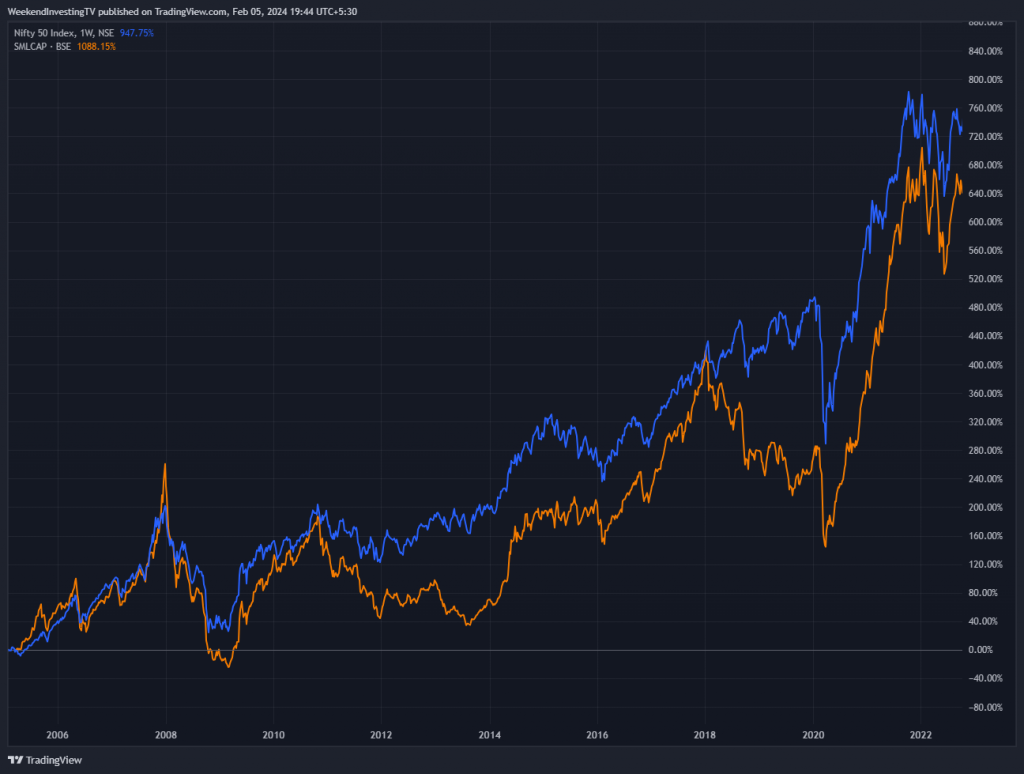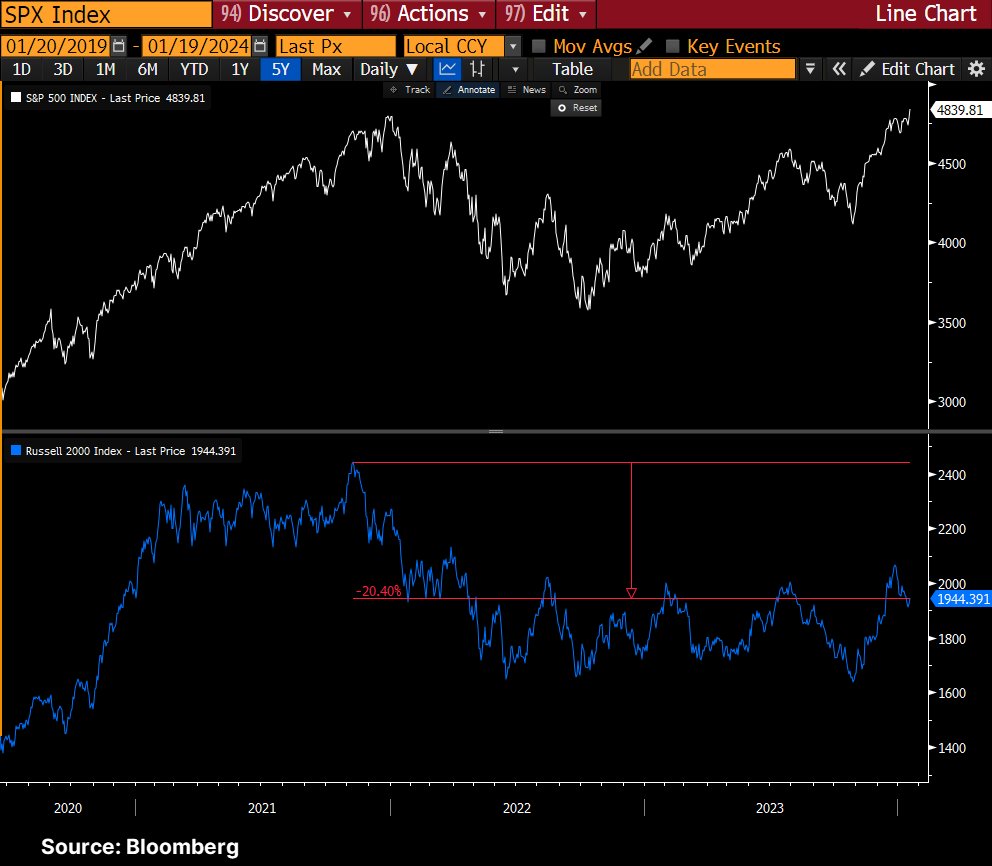Small caps and large caps are two key categories of market cap segments in the stock market. While they both represent stocks of publicly traded companies, there are significant differences between them in terms of market capitalization, performance, and risk factors. In this article, we will delve into the relationship between small caps and large caps and explore how their performance can impact the overall equity markets.
To begin, let’s analyse a historical chart comparing the Nifty (large cap index) and the small cap index over the past 20 years. The below given chart illustrates the performance of these indices, starting from a flat market phase in 2004-2005 and observing the subsequent rise. It’s important to note that small caps that perform exceptionally well tend to move out of the small cap index and transition to mid or large caps. This phenomenon creates a survivorship bias issue, whereby the best performers leave the small cap index periodically, leading to returns that are similar to the Nifty.

However, if you focus solely on the top performers within the small cap index, it is possible to outperform the index by a significant margin. Nevertheless, the main topic of discussion here is the behaviour of small caps in relation to large caps. When small caps lag behind large caps, a pattern emerges where they tend to catch up with the large cap index within a few years. Despite experiencing deeper drawdowns, small caps exhibit quick recovery and close the performance gap with large caps.
Let’s now examine the relationship between the S&P 500 (large cap index) and the Russell 2000 (small cap index). Currently, the S&P 500 is hitting new all-time highs, while the Russell 2000 is approximately 20% lower than its previous high. This mirrors the situation in India, where the small cap index has been underperforming relative to the large cap index.

There are two potential scenarios to consider. One possibility is that the small cap index, similar to its Indian counterpart, will catch up and eventually reach new all-time highs, aligning with the performance of large caps. The other scenario involves the influence of index inflows, which could cause the large cap index to continue rising while the economy may not be in great shape. This situation could potentially lead to small caps languishing for an extended period.
The outcome between these two scenarios can have significant implications for global equity markets. If the S&P 500 index experiences a double top pattern and begins descending, it may create headwinds for other markets worldwide. Additionally, there has been speculation about a potential soft landing or mild recession in the U.S., and it’s possible that the Russell 2000, representing the broader market, is already displaying signs of a recession. Global funds flowing into the S&P 500 index might be contributing to its maintenance and the continuous rise in price despite internal bleeding within the Russell 2000.

If you have any questions, please write to support@weekendinvesting.com









